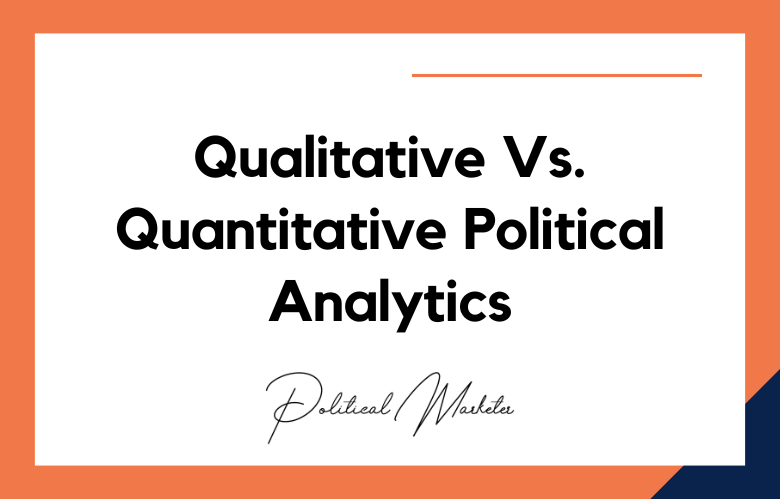A strong political candidate image can make or break a campaign. It shapes how voters perceive a candidate and influences their decisions at the polls. In today’s fast-paced world, candidates must craft an authentic image that resonates with their audience.
From social media presence to public speaking, every detail counts. Candidates need to connect emotionally with voters while showcasing their values and vision. This post will explore key strategies for building a powerful political candidate image. Learn how to enhance visibility and credibility, engage supporters, and navigate challenges in the ever-evolving political landscape.
Political Candidate Image through Content Marketing: Key Takeaways
- A political candidate’s image is crucial for winning elections; it shapes how voters perceive them and their values.
- To build a strong candidate image, focus on authenticity and consistency in messaging across all platforms.
- Actively manage public perception by addressing negative press quickly and transparently to maintain trust with voters.
- Regularly evaluate the effectiveness of your image-building strategies through feedback and analytics to make necessary adjustments.
- Remember that a positive candidate image can resonate well with voters, making it essential to align the candidate’s actions with their public persona.
Understanding Political Candidate Image
Importance of Image
The image plays a crucial role in shaping voter opinions. Candidates with a positive image often gain more support. Voters tend to trust candidates who appear confident and relatable. This trust can enhance credibility, leading to increased backing during campaigns.
A strong image can also impact campaign success and election outcomes. Studies show that candidates with favorable images perform better at the polls. For instance, in the 2008 presidential election, Barack Obama‘s image as a change-maker attracted many first-time voters, and his positive portrayal helped him secure the presidency.
Public Perception Factors
Key demographics significantly influence public perception. Age, gender, and education level can affect how people view candidates. Younger voters focus on social issues, while older voters prioritize economic stability.
Personal values and beliefs also shape opinions about candidates. Individuals often align with candidates who reflect their ideals. For instance, environmentalists may support candidates advocating for climate change policies.
Past actions and statements also contribute to current perceptions. A candidate’s history can either build or damage their reputation. If a candidate previously supported controversial policies, it could haunt them during elections. This is evident in the case of politicians who flip-flop on significant issues.
Media Influence on Image
Traditional media coverage significantly affects a candidate’s image. News outlets report on candidates’ activities, shaping how the public perceives them. Favorable coverage can boost a candidate’s image, while negative stories can harm it.
Editorial choices play a vital role in shaping narratives around candidates. The way stories are framed can highlight strengths or weaknesses. For example, focusing on a candidate’s achievements can create a favorable impression.
Media bias also impacts the public perception of candidates. Biased reporting can lead to skewed views among voters. Some media outlets may favor specific candidates over others, influencing audience opinions.
Building a Strong Candidate Image
Crafting a Consistent Message
Candidates must develop a clear message that aligns with their campaign goals. A strong message reflects what the candidate stands for and shows their core values. All communications, including speeches, advertisements, and social media posts, need to echo these values. Uniformity across various platforms strengthens the candidate’s identity. Voters recognize and trust consistent messaging.
For example, a candidate focusing on education reform should highlight this in every communication, whether a tweet or a flyer. The emphasis should remain on education, which builds credibility and helps voters connect with the cause.
Visual Branding Strategies
Visual branding is essential for any political campaign. Candidates should create a recognizable logo that embodies their vision. A well-designed logo can make an iconic impression and symbolize the candidate’s mission.
Color schemes and fonts also play a crucial role. They should resonate with target audiences. For instance, bright colors attract younger voters, while muted tones appeal to older demographics. Consistency in visual elements across campaign materials enhances recognition.
Incorporating visual elements in campaign materials boosts engagement. Eye-catching graphics can draw attention to critical messages. Flyers, banners, and online ads should all prominently feature these elements. This approach helps convey information quickly and effectively.
Leveraging Social Media Platforms
ial media platforms are vital for engaging with voters today. Candidates should utilize sites like Twitter and Facebook for real-time interactions. These platforms allow candidates to share updates quickly and respond to voter concerns immediately.
Sharing behind-the-scenes content humanizes the candidate. Voters feel more connected when they see personal moments or candid thoughts. This transparency builds trust and rapport between the candidate and supporters.
Encouraging supporters to amplify messages is also important. When followers share posts, it increases visibility. Likes and shares help spread the candidate’s message further than traditional methods could reach.
For example, a candidate could post about attending a local event and encourage followers to share their experiences. This would create community involvement and show active participation in regional issues.
Managing Public Perception
Addressing Negative Publicity
Responding quickly to negative news is crucial. Delays can worsen the situation. Candidates must clarify misinformation with factual rebuttals. Transparency helps rebuild trust.
Negative experiences can be turned into opportunities. For example, candidates facing criticism might share how they learned from the situation. This shows resilience and strength. Voters appreciate honesty and growth.
Engaging with the Community
Participating in local events builds rapport with constituents. Attending town halls or community fairs creates visibility. It shows that candidates care about their communities.
Candidates should take notes and address issues raised by voters, demonstrating commitment and responsiveness.
Supporting local initiatives also showcases dedication. Whether it’s sponsoring a local sports team or engaging in charity work, these actions resonate and highlight a candidate’s investment in the community’s well-being.
Transparency and Authenticity
Sharing personal stories connects candidates with voters on a human level. Stories about upbringing or challenges faced create relatability. Voters want to know who they are supporting.
It’s also important to be open about campaign funding. Candidates should explain where donations come from and how funds are used. This transparency fosters trust among constituents.
Encouraging honest dialogue is vital for building relationships. Candidates should invite questions and engage in discussions.
Role of Digital Marketing in Image
SEO Strategies for Visibility
Candidates must focus on keyword research. This process helps to identify the terms that voters search for online. Using these keywords in their content boosts visibility on search engines.
Local SEO tactics are vital. These strategies help candidates connect with specific voter groups. For example, targeting local issues can attract nearby voters’ attention.
Building backlinks is another key tactic. Partnerships with local organizations can enhance a candidate’s online authority. When reputable sites link back to a candidate’s page, their search ranking improves.
Content Creation Techniques
Engaging in blog posts is essential. Candidates should write about topics that matter to voters. This approach creates a connection and shows the candidate cares about their concerns.
Using multimedia content adds variety. Videos can explain complex policies, and infographics can present data easily. Both methods capture attention and make information memorable.
Regular updates keep the audience engaged. Candidates should frequently post about events, policies, or community involvement. This strategy keeps voters informed and interested in the candidate’s journey.
Monitoring Online Reputation
Candidates need to track mentions of their names online, including on social media, news sites, and forums. Knowing what they are talking about helps them understand public perception.
Analyzing sentiment is crucial for gauging public opinion. Positive comments can indicate effective strategies, while negative ones may require adjustments. Understanding these sentiments helps candidates refine their messaging.
Engaging with voters shows that the candidate values their input. Quick responses can also mitigate negative feedback before it spreads.
Summary
Crafting a solid political candidate image is essential for success. You’ve learned how to build and manage that image effectively. Understanding public perception and leveraging digital marketing can set you apart in a crowded field. These strategies help you connect with voters on a deeper level.
Your candidate image is your brand. It shapes how people see you and influences their decisions. Take action now—refine your image, engage with your audience, and use digital tools to amplify your message. The right approach can make all the difference in winning hearts and votes. Don’t wait; start building your impactful candidate image today!
Frequently Asked Questions
What is a political candidate’s image?
A political candidate’s image is the public’s perception of a candidate. It encompasses the candidate’s personality, values, and overall branding and influences voter decisions.
Why is a strong candidate image important?
A strong candidate image builds trust and relatability. It helps voters connect emotionally, increasing the chances of support during elections.
How can candidates build their image?
Candidates can build their image through consistent messaging, public appearances, and community engagement. Authenticity and transparency are crucial to establishing credibility.
What role does social media play in managing candidate image?
ial media allows candidates to communicate directly with voters, share their vision, and respond to concerns. It shapes public perception quickly and effectively.
How can negative perceptions be managed?
Negative perceptions can be managed by addressing issues head-on, providing clear communication, and showcasing positive achievements. Proactive engagement is essential.
What strategies enhance a candidate’s digital presence?
Effective strategies include targeted advertising, regular content updates, and interactive campaigns. Engaging visuals and storytelling can significantly boost online visibility.
How does public perception affect election outcomes?
Public perception heavily influences voter behavior. A favorable image can increase support, while negative perceptions may deter potential voters.











